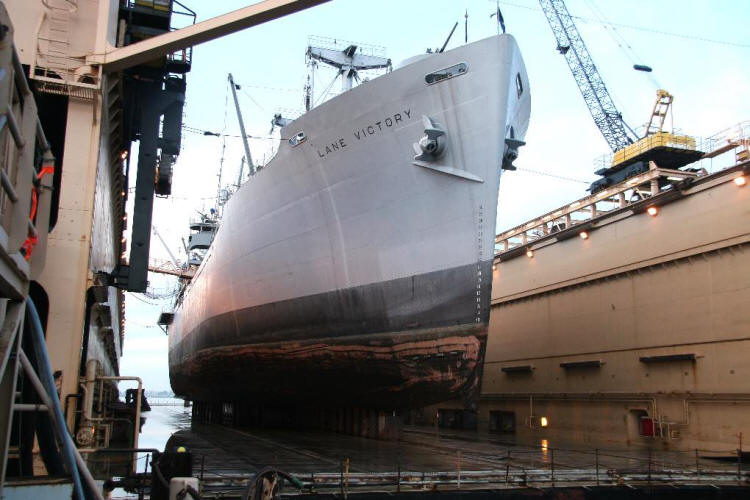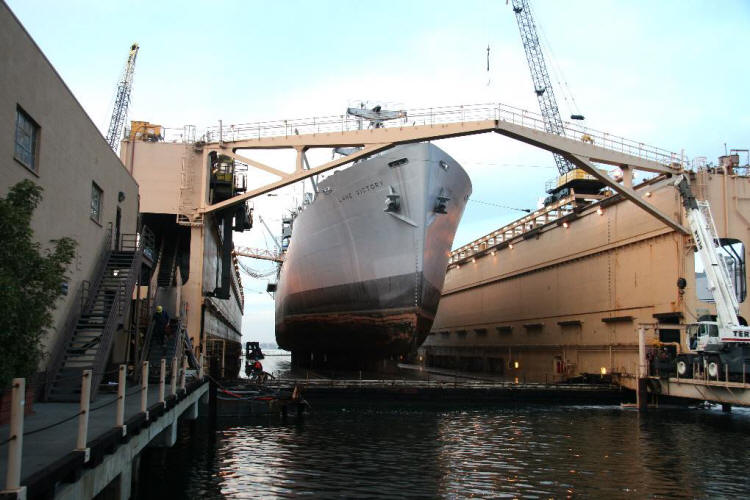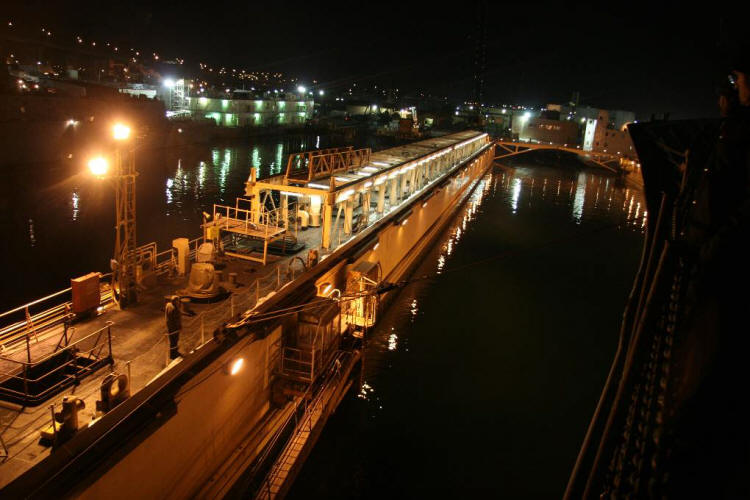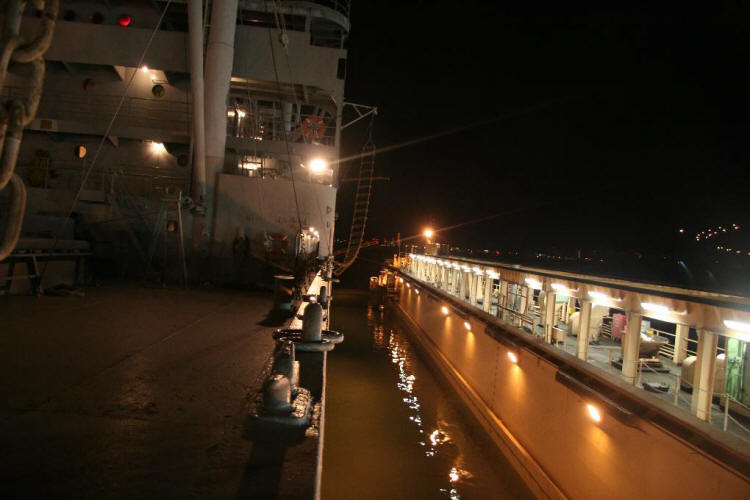Mike The Engineer Provided Drydock Pictures
Did you know? - A drydock is a narrow basin or vessel that can be flooded to allow a load to be floated in, then drained to allow that load to come to rest on a dry platform. Drydocks are used for the construction, maintenance, and repair of ships, boats, and other watercraft.
We got a nice letter from "Mike The Engineer"...
January 2009
Dear Paul & Sue,
Last night/early this morning, the S.S. Lane Victory steamed down to
San Diego for it's Coast Guard mandated dry-docking for inspection and
any needed repairs. There aren't any dry-docking facilities in the Los
Angeles area, hence having to go to the San Diego shipyards (mostly
military ships there).
The S.S. Lane Victory is a WWII Victory-class cargo ship that is now a
National Historic Landmark and a tribute to the fallen Merchant Marine
and their vessels.
We steamed (yes, this is S.S. - Steam Ship) to the shipyards in San
Diego over the somewhat leisurely course of 12 hours and arrived at the
dry dock facility around midnight last night (Monday) just past the
Coronda Bay bridge. (The curving lights on the right hand side of
picture) are the lights of that bridge which
spans San Diego harbor) The (floating) dry dock is actually submerged
about 30-40 feet under the water. The Lane was gently pushed, pulled &
prodded into center of the dry dock.
As the water (ballast) is pumped
out of the floating dry dock, the Lane is carefully positioned over the
keel blocks. The dry dock slowly rises up and gently lifts the ship up
out of the water with the ship now resting on the keel blocks as can
seen in the high & dry the pictures. Now that the ship is high & dry,
the inspections and any necessary work can be performed over the next
10-14 days.
Side note : On a ship that's been in the water for many years you would
normally see large amounts of barnacles at the ship's waterline. But as
you can see, the Lane's hull is pretty clean. The marine growth
was cleaned/removed while the ship was at it's normal berth in San Pedro
(Los Angeles harbor). That saved $ and time not having it removed in dry
dock.
This was a very unique experience and hope you enjoy the pictures !
Mike
Pictures Courtesy Of "Mike The Engineer"
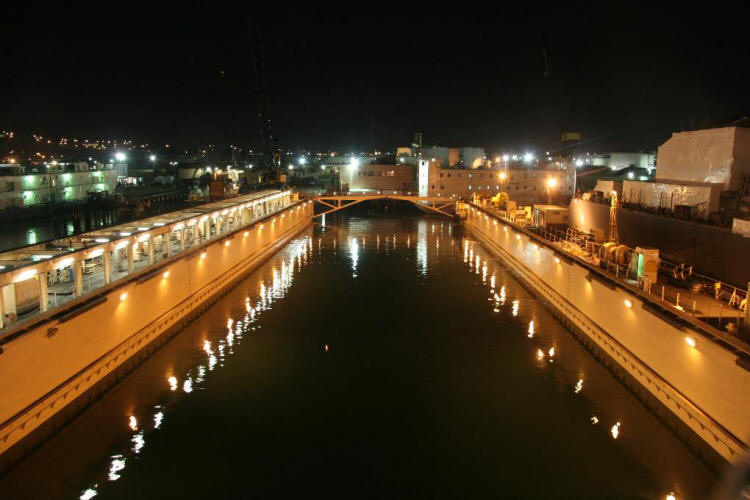
Float right on into the drydock
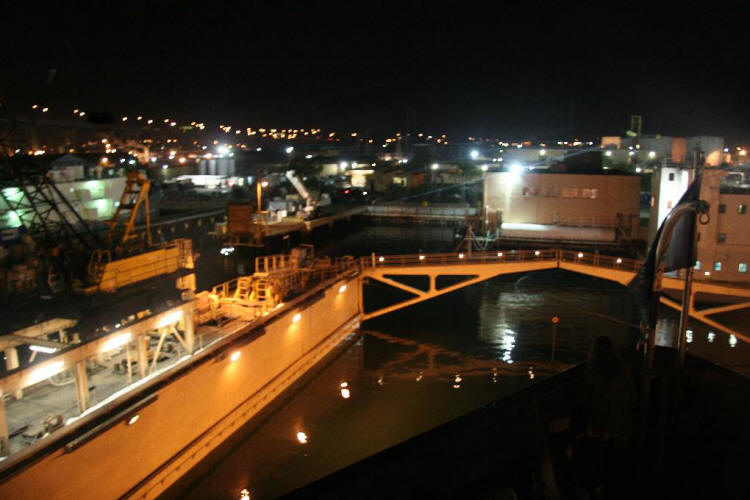
Looks like a pier at night and then.....
Did You Know? - Did you know? - According to the ancient Greek author Athenaeus of Naucratis (V 204c-d), the drydock was invented in Ptolemaic Egypt , some time after the death of Ptolemy IV Philopator (reigned 221-204 BC):
But after that (the reign of Ptolemy IV Philopator) a Phoenician devised a new method of launching it (a ship), having dug a trench under it, equal to the ship itself in length, which he dug close to the harbour. And in the trench he built props of solid stone five cubits deep, and across them he laid beams crosswise, running the whole width of the trench, at four cubits' distance from one another; and then making a channel from the sea he filled all the space which he had excavated with water, out of which he easily brought the ship by the aid of whatever men happened to be at hand; then closing the entrance which had been originally made, he drained the water off again by means of engines (organois); and when this had been done the vessel rested securely on the before-mentioned cross-beams.
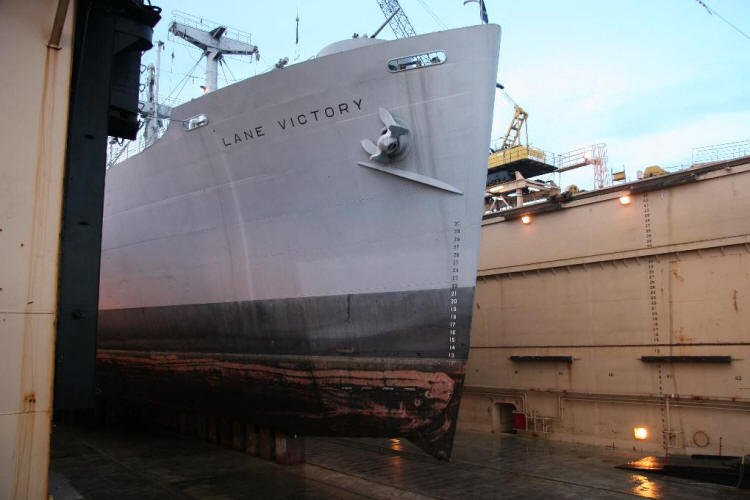
She was scrapped in San Pedro saving a lot of $$$
Did You Know? - Did you know? - Northrop Grumman Newport News Shipbuilding's Dry Dock 12 is the largest drydock in the USA
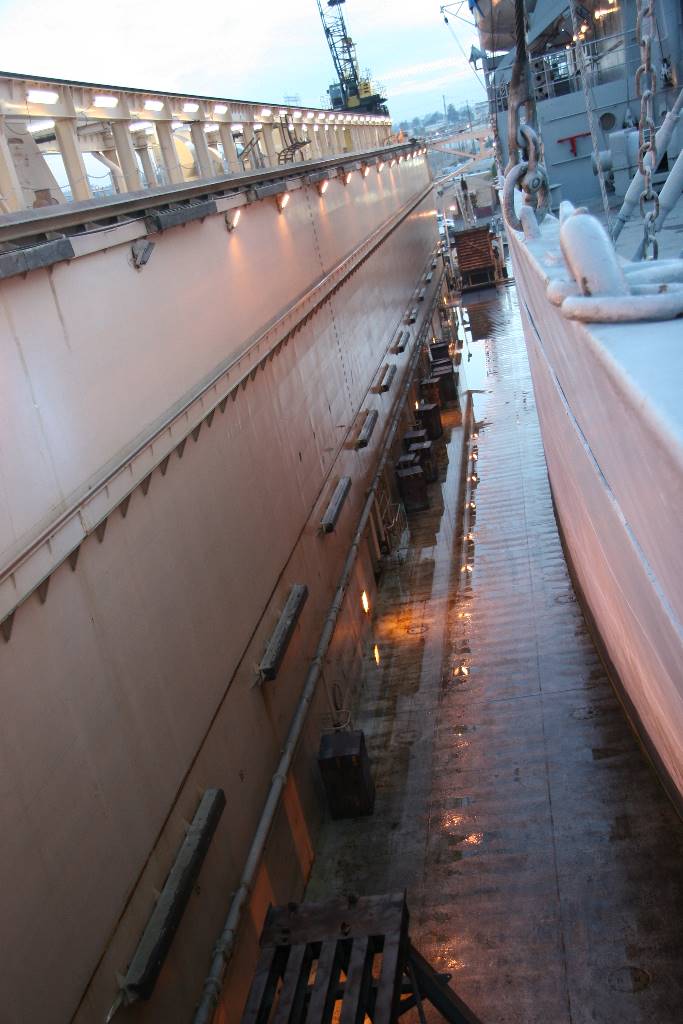
Did You Know? - Did you know? - A floating drydock is a type of pontoon for dry docking ships, possessing floodable buoyancy chambers and a "U" shaped cross-section. The walls are used to give the drydock stability when the floor is below the water level. When valves are opened the chambers are filled with water, the dry dock floats lower in the water, allowing a ship to be moved into position inside. When the water is pumped out of the chambers, the drydock rises and the deck is cleared of water, allowing work to proceed on the ship's hull.
A typical floating drydock involves multiple rectangular sections. These sections can be combined to handle ships of various lengths, and the sections themselves can come in different dimensions. Each section contains its own equipment for emptying the ballast and to provide the required services, and the addition of a bow section can facilitate the towing of the drydock once assembled. ~Wikipedia
